10 Best Photos From #THEROOLIFE In The Last Month!
If you are not posting to #theroolife on Instagram, here is what you are missing! The Kammok MOB has been going off lately with some insane photographs. Here are some of our favorites!



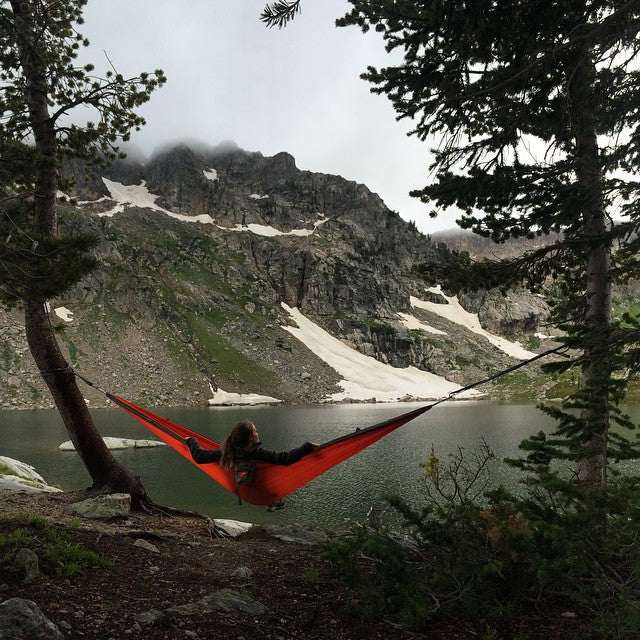


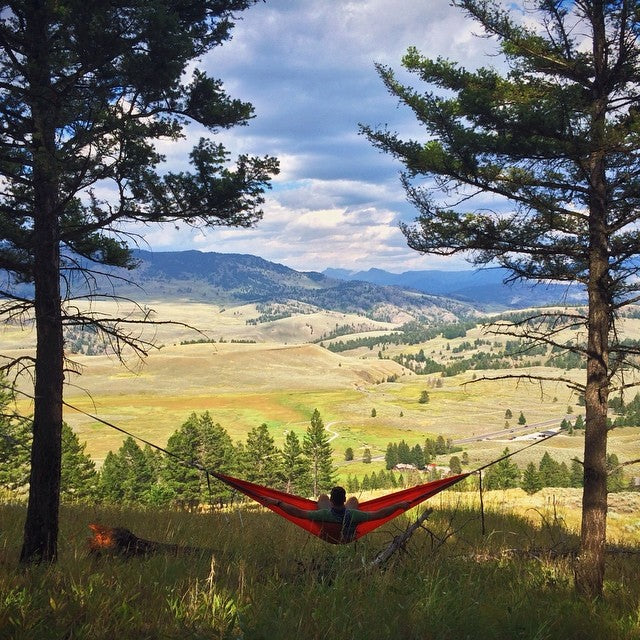

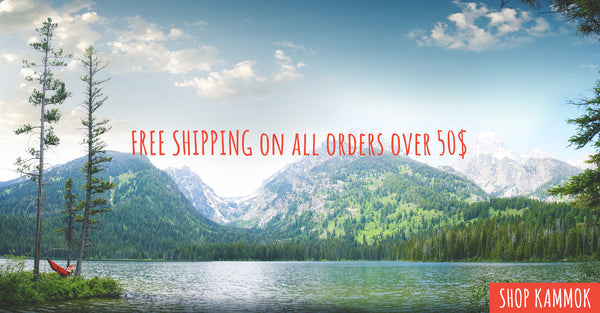




If you are not posting to #theroolife on Instagram, here is what you are missing! The Kammok MOB has been going off lately with some insane photographs. Here are some of our favorites!













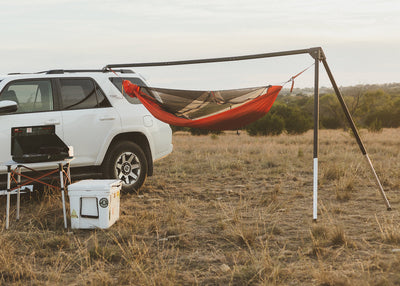
The universal mount included with every Outpost is designed to be compatible with a wide variety of roof racks. What's Included: 1 detachable ball bracket 2 clamp plates 2 bolts for ball bracket 2 hex nuts for ball bracket 2 t-slot nuts 4 clamp plate bolts 4 hex nuts for clamp plates 2 foam pads for clamp plates Cross Bar Compatibility The image below shows how the universal mount is assembled for cross bar compatibility. This assembly utilizes all of the included parts except for the 2 t-slot nuts. Outpost is designed to mount to all standard cross bars as seen in the following image: Need more rack space? Outpost is designed to work with the universal mount attached on the underside of cross bars as well: T-Slot Compatibility The next image shows how the universal mount is assembled for t-slot compatibility. This assembly utilizes the detachable ball bracket, 2 bolts, and 2 t-slot nuts. Outpost easily mounts to your rack's t-slots as seen in this image: Additional Mounting Options The universal mount can also attach to these style racks using the two clamp plates: Platform-Style Racks Basket-Style Racks Truck Bed Cargo Racks Custom Mounting Additionally, the Outpost universal mount can be custom mounted to a variety of racks using the detachable ball bracket as seen below: Questions? For more information on how Outpost can attach to your vehicle, please reach out to us here.

Once you’ve picked out which Kammok hammock style works best for you and your favorite color (we think that’s the hardest part), it’s time to learn how to hang and care for it. We’ve compiled a guide for all your hammock care needs that can be applied to any Kammok hammock type (Roo Single, Roo Double, Roo Jr., Roo Double XL, and Roo Single UL) How to Set Up Your Hammock Applies to all Kammok hammock types excluding the Roo Single UL. Find two points to hang your hammock between. Each hammock size calls for a slightly wider or narrower set up, however the standard to look out for is 12-15 feet. Grab your hammock straps. Wrap the widest part of the strap around the tree or post. Pull the strap through the end with the single loop. Ensure to loop your straps around the tree about 6 ft high. Unbuckle the rolled up top from your Roo hammock and pull out the fabric. Clip the hammock carabiner through one of the Python strap loops and repeat this step on the other side. Tip: Clip the strap bag onto hammock carabiner for safe keeping. For a safety check, press into the center of the hammock to test before sitting down. Adjust your hammock as needed to rest at a 30 degree angle and try out the other ways of hanging below. How to Hang In Your Hammock Applies to all camping hammock types. Who said hammocks are only for laying down? There’re so many ways to hang in your favorite Kammok hammock depending on where you are and who you’re with. Here are a few of our favorite ways to hang. The Chair - Perfect for talking in a group, watching the sunset or hanging around a campfire. An easy way to sit upright and relax with legs hanging over the hammock or cross legged. The Lounge - Our favorite way to nap, relax and look up at the sky on a starry night. Lay diagonally, spreading the hammock fabric for space and comfort. This one is great for cuddling with your adventure dog (or human). The Perch- A good way to hang while reading a book or hanging with a buddy in a Roo Double or Double XL. Scoot to one end of your hammock and sit upright while keeping your legs straight. How to Pack Your Hammock Applies to all camping hammock types. When you’re done using your hammock for the day, it’s important to pack it after each use to protect the fabric from long-term exposure to the elements. To do this, unclip one side of the hammock and pack it into the stuff sack, one side at a time. Then, unclip the second side of the hammock. We recommend keeping the carabiners on the top. Roll the stuff sack twice and and buckle the sides. Roll up each Python strap and place them back into the stuff sack. How to Wash Your Hammock Applies to all Kammok hammock types excluding the Roo Single UL. Hand wash Roo Single UL only. If your hammock is soiled or stained from all your epic adventures, we recommend hand washing when possible. However, avoid washing your hammock frequently since this will deteriorate the DWR coating and lessen durability of the fabric over time. If using a washing machine is necessary, make sure to use one without a center agitator as this can tear up the fabric. Remove the carabiners and slings prior to washing. Place the hammock fabric in the washing machine. Fill the Grangers Down Wash + Repel cap to the recommended level. A gentle powder detergent will work as well. Do not use fabric softener, bleach, or stain removal products. Wash the hammock fabric by itself on a gentle, cold-water setting. Hang dry in a warm and non-humid environment until the fabric is no longer damp. Once the fabric is completely dried out, attach the slings and carabiners to the ends. You can use an unopened pen to help thread the sling back through the hammock fabric. Your hammock is clean and ready for more time outside. These tips and guidelines will help you make the most of your Kammok hammock. Make sure to check out our Help Center FAQ for all of your product use and care questions.
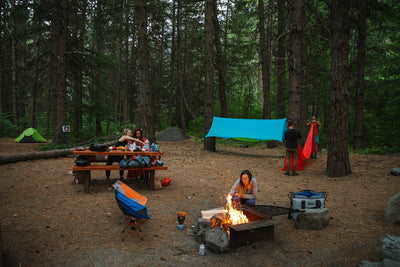
If you spend time outside, whether you’re hiking, camping, climbing, or mountain biking, chances are you frequent public lands. Luckily, through national parks and forests, state parks, and local trails, adventurers have the ability to explore everything from alpine habitats to deep canyons and everything in between. More and more people are getting outside and visiting parks at record levels, which is why it’s important for all of us to become good stewards of the ecosystems entrusted into our care. The following Leave No Trace principles are key to maintaining pristine wildlife in our parks, and they basically all boil down to one unifying point: Leave it like you found it. 1. Plan Ahead and Prepare This isn’t just a good idea to make the most of your camping trip—it’s also an essential aspect of Leave No Trace. When visiting national parks, become familiar with the “Plan Your Visit” tab on a park’s page. Each park is different, with special concerns and regulations that you should be aware of. Planning ahead also means reducing your footprint by visiting parks in smaller groups when possible and avoiding times of high use. Do your part today by becoming familiar with parks you frequent often or plan to in the near future. Here’s an example of a regulations page from one of our personal favorites: Arches National Park. 2. Travel and Camp on Durable Surfaces The National Park Service has spent many years developing trail systems and campsites for our enjoyment. However, the purpose is not simply to give us access to wild places. By sticking to designated trails, visitors make less impact on the park and prevent degradation from erosion. The same principles can be applied to campsites as well. When you pack up in the morning, your campsite should essentially be unchanged. The best way to ensure this is by utilizing campsites already designated by the parks. In the backcountry, stick to marked campsites or other durable surfaces like rock, gravel, sand, dry grasses, or snow. You can also protect riparian areas by camping 75 steps away from lakes and streams. If you’re curious, you can also check out these two articles from the NPS about the history and current management principles of trail making. 3. Dispose of Waste Properly We’ve all seen the signs: Pack it in, pack it out. Comma splice or not, these words should be at the forefront of every visitor’s mind when exploring public lands. Even with the glaring signs at every trailhead, you’re almost certain to find trash from someone who came before you. We could write an entire article on this single principle, but here are a few basic tips to keep in mind. When packing food for your trip, dispose of any unnecessary trash ahead of time: Think produce stickers and packages within packages. For example, if you’re bringing cereal on the trip, consider recycling the box ahead of time and only bringing the bag. Meal prepping ahead of time can also be a great way to lighten your load and reduce the amount of waste in camp. In the backcountry, utilize freezer baggies to group meals and act as a waste receptacle to be disposed of properly when back at park headquarters. And remember, pack it out means pack it all out, including orange peels and pet waste. Utilize toilet facilities when possible—park maps do a great job of pointing you in the direction of a bathroom. When making overnight trips away from facilities, packing a bathroom kit is essential. A simple kit includes toilet paper, wet wipes, hand sanitizer, and a small spade. You should also bring a separate baggie for the disposal of paper products. For solid waste, dig your cathole 6-8 inches deep and 75 steps away from water, campsites, and trails. Cover and disguise the cathole with the removed dirt when finished. Lastly, to wash dishes or yourself, carry water 75 steps away from any water source and use only small amounts of biodegradable soap if necessary. Scatter any strained dishwater. Consider using body wipes for personal hygiene. These are easy to dispose of and can be purchased from most outdoor retailers. 4. Leave What You Find This one is pretty simple. Imagine you’re a kid and your parents have dragged you into yet another antique store. “Don’t touch anything!” A pine tree certainly isn’t as fragile as fine China, but that doesn’t mean we should be carving our initials into one. Leave rocks, plants, and other natural items where they are—these aren’t souvenirs for you to bring home. The whole purpose of this principle, and every principle for that matter, is to leave parks in their natural state for other visitors to enjoy. Not to mention we want to preserve these ecosystems so that plants and wildlife can continue to thrive. 5. Minimize Campfire Impacts We’ve all seen in the news how damaging fire can be, which is why this principle is extremely important. Follow fire regulations at any given park, and simply don’t build a fire when and where it isn’t allowed. This goes back to planning ahead as well: If you think you’re going to find yourself in a situation where you need added warmth, pack the appropriate insulation. Bring along a small stove as well for any meals in the backcountry. Where fires are permitted, use park fire rings, portable fire pans, or mound fires. Always keep fires small and only use down and dead wood that can easily be broken by hand. When you’re done with the fire, let the coals burn to ash, put the fire out completely, and then scatter the ashes. Your goal is to remove any indication that a fire has ever been made. 6. Respect Wildlife Animals in parks are truly wild and should be treated as such. It seems like every year there’s a new video of someone approaching a bison in Yellowstone to get a closer look—a situation that never ends well. Beyond your own safety, respecting wildlife means helping them stay wild. That means never feeding animals, either purposefully or accidentally by leaving food lying around. Feeding wild animals can alter natural behaviors in ways that are damaging to the ecosystem. Store food items securely, dispose of trash properly, and use bear boxes where offered. All of these measures will help prevent wildlife from taking a liking to your trail snacks. 7. Be Considerate of Other Visitors Finally, be nice to everyone in the park. Just as you should leave parks in pristine shape for future visitors, you should also respect the ones who happen to be there at the same time as you. Yield to other hikers on the trail, step on the downhill side of the trail when encountering pack animals, and consider the fact that not everyone loves loud music. Public parks are for everyone. By following these simple guidelines, you’ll allow others and yourself to enjoy the outdoors in a way that benefits both you and the landscapes you visit. One final note on the Leave No Trace principles—our eighth rule if you will. Leave it better than you found it. This isn’t our attempt to implore you to beautify the landscape by planting flowers (please don’t do that). Instead, we encourage you to bring an extra trash bag along when hiking and camping. Even in pristine national parks, you’re bound to find litter left behind by visitors. You may feel like you’re not even making a dent in some of your park cleanup efforts, but every piece of trash picked up helps. If we’re going to be good stewards of the land we get to enjoy, we might as well go above and beyond the call of handling our own mess. You may even be surprised to find how addicting it can be to pick up other people’s empty beer cans. This year on National Camp at Home Day, we encourage everyone to start practicing these Leave No Trace principles. Go for a hike on your favorite local trail and pack out the litter you find along the way. When cooking your camp meal, take into account how much waste you’re creating and come up with a plan for packing it out in a backcountry setting. If you have kids around the campfire, teach them the importance of the seven Leave No Trace principles so they’re ready to hit the trail with you. We can all make a positive impact by thoroughly learning these principles and implementing them when the time comes.

Over the past 10 years, we've been on a mission to elevate time outside by designing outdoor gear that lives up to our promise: Adventure Grade, Better Made™. And in that process of creating the best quality gear, we're mindful of our impact it has on the environment and community. As a 1% for the Planet member, we've donated 1% of revenue to social and environmental non-profits thanks to your support. As a certified B Corp company, we have committed our business practices to reach a high caliber of social and environmental sustainability. In 2020, we introduced our first fully recycled Bluesign approved fabric with the launch of the Arctos 20. In the coming months, we'll incorporate recycled materials and cleaner manufacturing processes in our core product lines. Today, we’re proud to announce we have committed to becoming Climate Neutral Certified. We’re working with Climate Neutral, an independent non-profit organization, to measure, reduce, and offset our carbon emissions. The three-step process will give us net-zero carbon emissions, meaning we’ll reduce the amount of carbon we’re responsible for emitting, then zero out the rest by purchasing carbon offsets. Carbon offsets are investment projects that either prevent carbon from being emitted, like renewable energy, or remove carbon from the atmosphere, like planting trees. You’ll soon start seeing the Climate Neutral Certified label on our packaging and website. This label will help conscious consumers support brands that are taking immediate steps on climate action. At Kammok, we're committed to designing adventure grade, better made gear. Becoming Climate Neutral Certified holds us accountable in our ongoing commitment of better made, sustainable manufacturing. Learn more about our commitment to a low-carbon future at climateneutral.org and find out more about why we’re so passionate about taking climate action. We remain inspired by you and can't wait to update you along the way. Elevating time outside, Greg McEvilly CEO & Founder